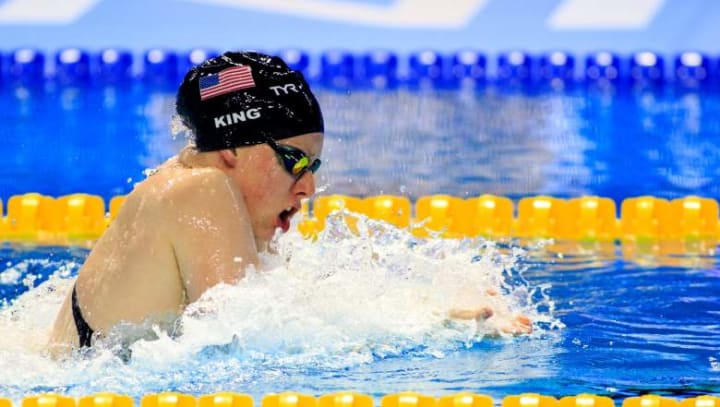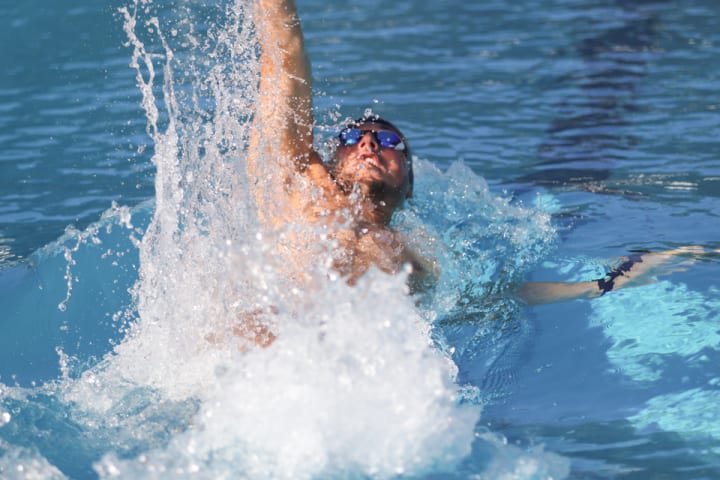Things to Think About Before Signing Your Kid up for Swim Lessons
Think your kid is a high level because their age? Think again!

Starting swim lessons is an exciting experience. Whether you’re signing up your kid as a little tike or you’re starting as an adult. It is a very critical skill to learn and helps you not only in swimming itself, but understanding many other life skills.
To give some background on myself, I have been swimming for more than 20 years, have a competitive background, and am certified as a WSI and have been teaching lessons for four and half years.
Let’s start with the basics.
Early Levels of Swimming

When you first start out to swim, whether it’s your kids first time or your first the things you will learn are floats and bubbles.
Bubbles, though adults might not think so, are very important. They help with learning how to breath properly. When going down in the water one will hold their breath. Which is what normal people do, but when you come up from that blowing bubbles is what you should do because if you are going to go right back in the water it’s easier if you let out most of your air to get more air that you need.
This is also what you do instead of plugging your nose. NEVER PLUG YOUR NOSE! I can’t stress this enough. Blow bubbles instead. My husband was cliff jumping and plugged his nose to not get water in it and instead of helping him, it ended up blowing out his ear drums. Not a bright idea.
Floating is the next item that is important to learn. Floating helps you learn your bodies floating point. Knowing this helps you understand what you need to practice while you swim. For example, I am a sinker so I have to try extra hard to keep myself afloat. I have high bone density which is a factor of my sinking problem. If you have a lot of muscle mass then you are more likely to sink as well. If you have lighter bone density or have more fat then you are more likely to be a floater. I am so jealous of those people.
Knowing how to float on your back helps with breaks for if you are in deep water and the strokes that are on your back (Backstroke and Elementary Backstroke, generally).
Knowing how to float on your stomach helps with swimming for freestyle and swimming forward.
If your child knows how to do these things move onto the next phase. If they don’t keep them at lower levels. IT DOES NOT MATTER HOW OLD THEY ARE. If you or your kids are embarrassed that these skills aren’t mastered, put them in a private lesson.
Mid Stage

Once you've passed those two important parts of swimming you are ready to begin moving forward. Literally. In this stage this is where you start learning how to swim forward and backwards (going forward still, just on your back).
If your kid already knows these, put them in a higher level, but if they are just starting to learn them put your child in the mid range levels so they can learn them and continue practicing.
These stages will teach your children how to properly swim freestyle (front crawl), backstroke (back crawl), Elementary backstroke, and how to properly breath. Depending on the teacher and the class they might move more quickly than other classes. That just depends if the teacher believes the class is ready to learn more skills and the class is competent enough to comprehend the new skills.
Other skills your kids will learn is while in these levels is the beginnings of going to the bottom of the pool and how to come back up (they may not go to the deep end to do this, but they will learn the beginnings of it), how to glide properly, the beginnings of treading, and other little things that will help them prepare for the next levels.
If your kid needs to know these skills, put them in the mid levels, depending on if they have mastered certain skills and if their age (because if they are too small they can't get their head out of the water or they may not be strong enough) allows them to be in those levels. If they passed these skills and can swim somewhat competently by themselves, move them to a higher level.
High Stage

Depending on how far you want your children to go in swimming is up to you and the child. I would recommend going to the highest level of swimming your pool offers because they will learn more techniques and most likely how to save themselves when they are in a bad water situation.
In these levels your kids will be taught the breaststroke, butterfly, swimming in the deep end, how to dive, and essentially how to stay alive if they are in a pool for awhile.
If the place you take your kids to is good, they will have lessons on safety and what to do around water and how to respond to certain situations, whether they or someone else is in it.
At this stage, you or your kid should be able to swim by themselves and have a basic understanding of swimming. You will learn how to hone your skills and work on technique from past teaching and learn the harder strokes that you will have the endurance and muscles for. And the patient and a higher understanding of what the teacher is saying.
Understanding you and your child’s swim skill level

Age and skill are both important parts of swimming because as you get older your muscles start developing and you need to start young to understand how to get muscle memory. I read in an article that when you are young between the ages of three to six you should be play practicing skills, meaning that you are still practicing the skills, but in a fun entertaining way that the kids understand and don’t think are actually doing something. Between the ages of six to 10 is when they should be honing those skills and really understanding the meaning behind those skills. It makes a lot of sense. So make sure you are placing your kid in a class that is right for them or put them in private lessons until they are where they should be swimming wise.
Review what you or your child can do and make sure you choose the correct class.
**Note, this isn't a full list of what your kids will learn. They will learn more and in different ways from different teachers because everyone has their own style and their way of communicating these skills. These are the basics of what each level provides.
If you have questions! I am happy to help!
About the Creator
Rich Burton
I’m a work from home mom with 2 crazy kids. I write for fun with the hopes of finishing my unfinished book!






Comments
There are no comments for this story
Be the first to respond and start the conversation.